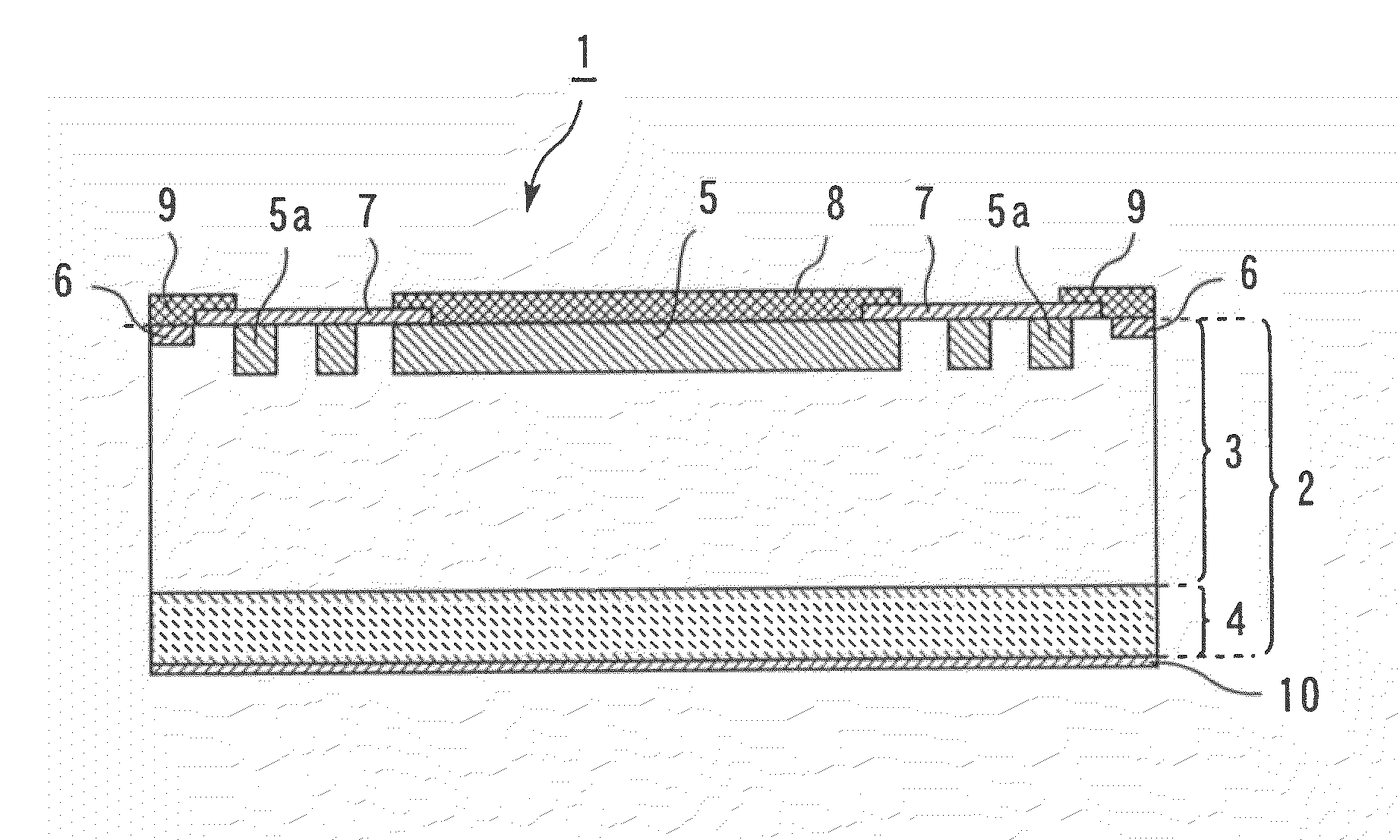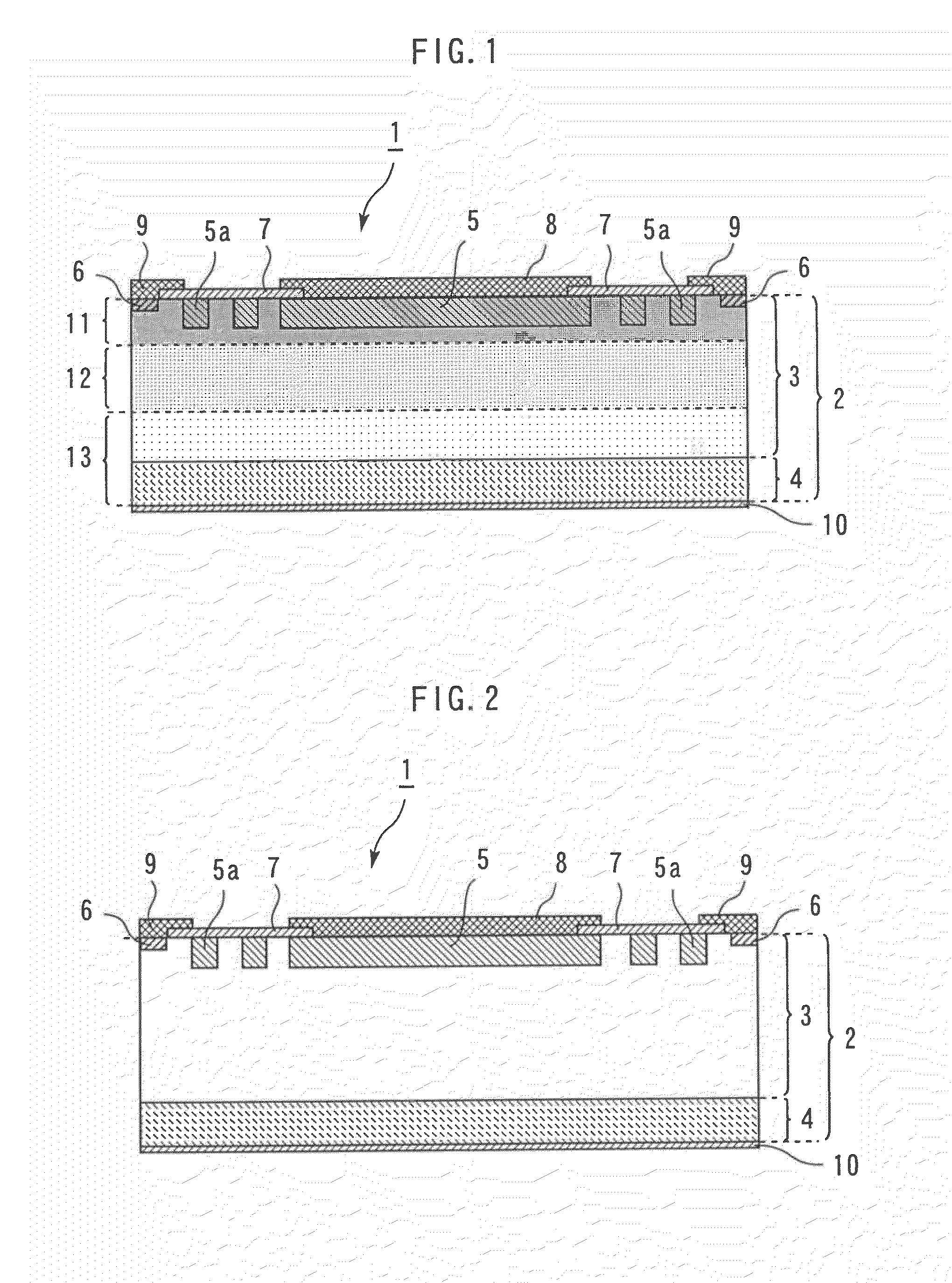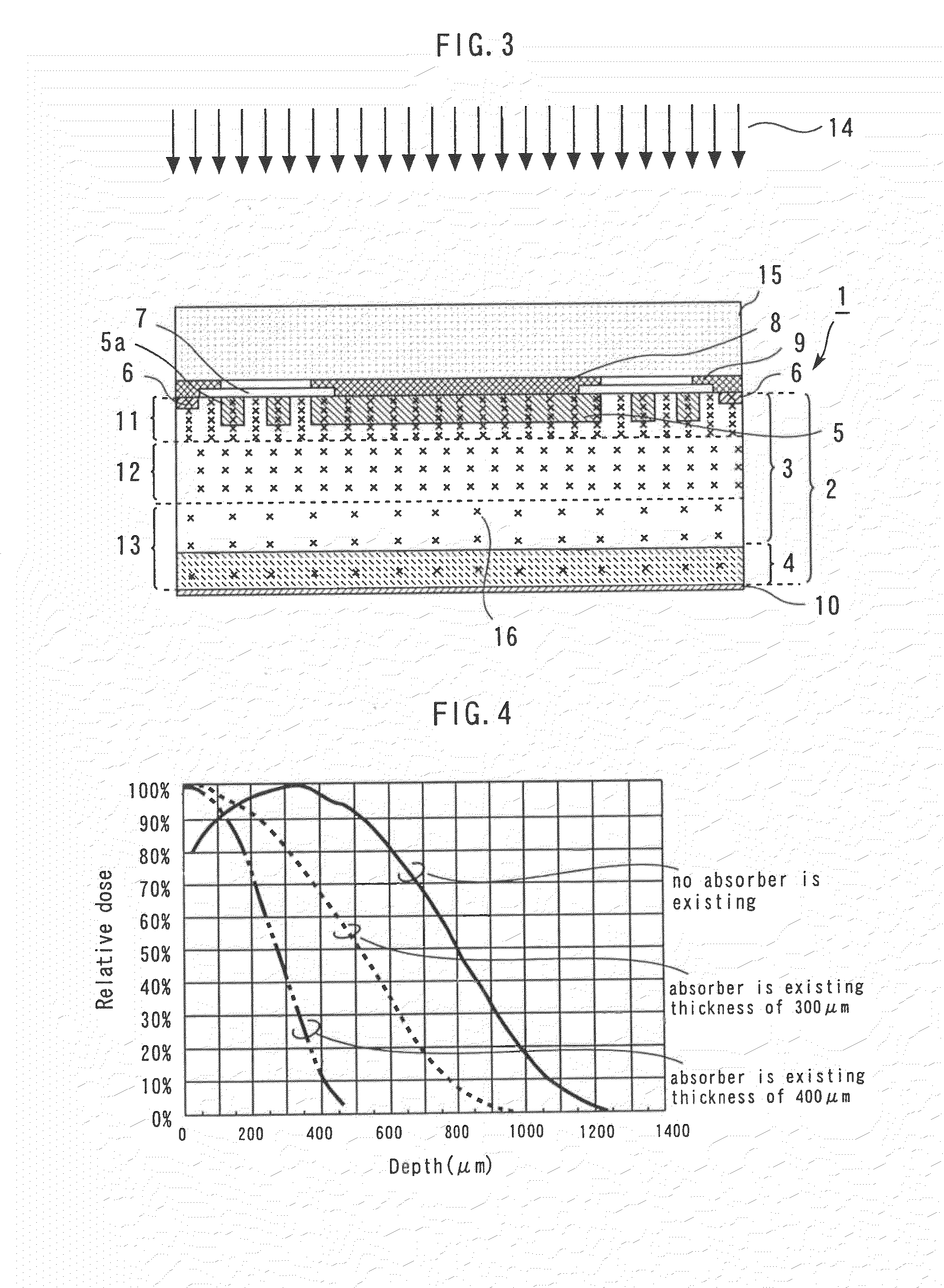Semiconductor device and method for manufacturing the same
a technology of semiconductor devices and semiconductors, applied in the direction of semiconductor devices, basic electric elements, electrical equipment, etc., can solve the problems of deterioration of the energy loss of the diode, increase of energy loss, and deterioration of the tradeoff curve of forward voltage drop (vf), so as to minimize the breakdown voltage characteristics of the p-n junction in the diode and achieve optimal carrier life. the effect of optimal carrier li
- Summary
- Abstract
- Description
- Claims
- Application Information
AI Technical Summary
Benefits of technology
Problems solved by technology
Method used
Image
Examples
first embodiment
[0022]A semiconductor device according to the first embodiment will be described. Here, a semiconductor device having a diode of a rated element breakdown voltage of 200 V or higher, and used in railways or the like will be described.
[0023]FIG. 1 shows a sectional view of the above-described semiconductor device 1. The semiconductor device 1 is formed using an n-type semiconductor substrate (hereafter simply referred to as “substrate”) 2. In the upper major surface side of the substrate 2, a low-concentration n-type impurity layer 3 containing a low-concentration n-type impurity is provided. The thickness of the layer 3 is not less than 250 μm, and the resistivity thereof is not less than 150 Ω·cm. In the lower major surface side of the substrate 2, a high-concentration n-type impurity layer 4 containing a high-concentration n-type impurity is provided so as to contact the low-concentration n-type impurity layer 3. In the vicinity of the upper major surface of the substrate 2, a p-t...
second embodiment
[0038]A method for manufacturing a semiconductor device according to the second embodiment will be described. Here, the description will be focused on the aspects different from the first embodiment.
[0039]In the same manner as in the first embodiment, a semiconductor device 1 wherein a p-n junction is provided at the interface between a p-type diffusion layer region 5 and a low-concentration n-type impurity layer 3 in the vicinity of the upper major surface of a substrate 2 (refer to FIG. 2).
[0040]Next, as shown in FIG. 5, electron beams are radiated onto the upper major surface of the substrate 2, and crystal lattice defects 16 are formed in the substrate 2. At this time, the accelerated energy of electron-beam radiation is within a range between 400 and 500 keV. For example, electron-beam radiation of an accelerated energy of 400 keV and a dose of 3×1015 cm−2 is performed. Alternatively, electron-beam radiation of an accelerated energy of 500 keV and a dose of 1×1015 cm−2 is perfo...
third embodiment
[0050]A method for manufacturing a semiconductor device according to the third embodiment will be described. Here, the description will be focused on the aspects different from the first embodiment.
[0051]In the same manner as in the first embodiment, a semiconductor device 1 wherein a p-n junction is provided at the interface between a p-type diffusion layer region 5 and a low-concentration n-type impurity layer 3 in the vicinity of the upper major surface of a substrate 2 (refer to FIG. 2).
[0052]Next, as shown in FIG. 9, a mask 15a having an opening A is placed on the upper major surface of the substrate 2, and electron beams 14 are radiated through the mask 15a onto the upper major surface of the substrate 2. As the material for the mask 15a, a stainless steel having a specific gravity of 7.9 or the like is used. Thereafter, although not shown in the drawing, the semiconductor device is heat-treated in the same manner as in the first embodiment.
[0053]As a result, as shown in FIG. ...
PUM
 Login to View More
Login to View More Abstract
Description
Claims
Application Information
 Login to View More
Login to View More - R&D
- Intellectual Property
- Life Sciences
- Materials
- Tech Scout
- Unparalleled Data Quality
- Higher Quality Content
- 60% Fewer Hallucinations
Browse by: Latest US Patents, China's latest patents, Technical Efficacy Thesaurus, Application Domain, Technology Topic, Popular Technical Reports.
© 2025 PatSnap. All rights reserved.Legal|Privacy policy|Modern Slavery Act Transparency Statement|Sitemap|About US| Contact US: help@patsnap.com



